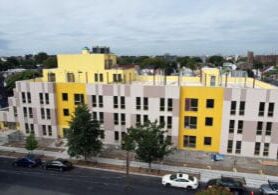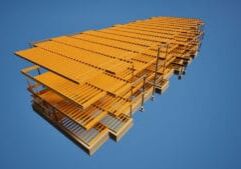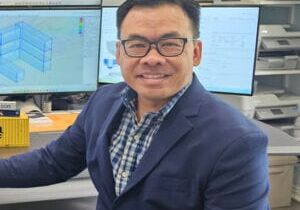BMarko Structures – Modular Means Flexible
High-End Shopping Mall Embraces Shipping Container-Based Shops
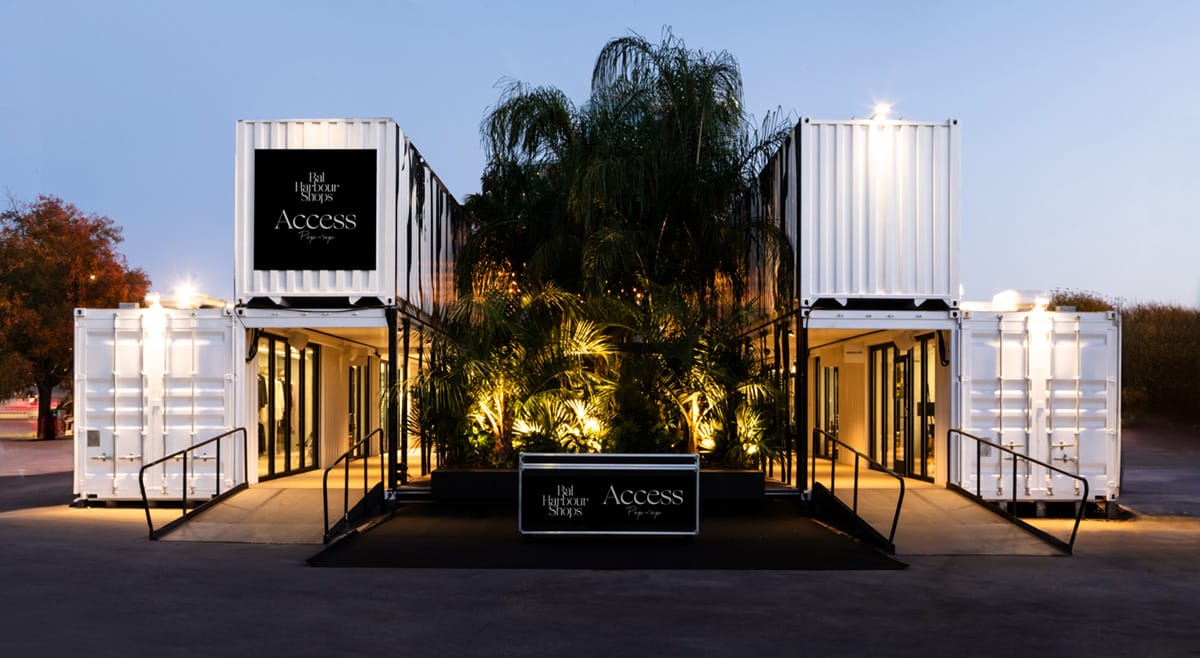
Bal Harbour Shops is the highest grossing mall in the United States, maybe even the world. It’s located in Miami Beach, Florida and features high-end brands like Chanel, Fendi, Gucci, Versace, and Ralph Lauren. The average customer drops $20,000 per trip, plus the expense to travel to Miami.
In an effort to increase sales, the shopping mall devised a unique idea – create a mobile mini version that could travel to other locations and tap into new customer bases. A shipping container mall seemed to make the most sense as the backbone for the new shopping center, but there was certainly an image problem: How to provide a high-end shopping experience using shipping containers?
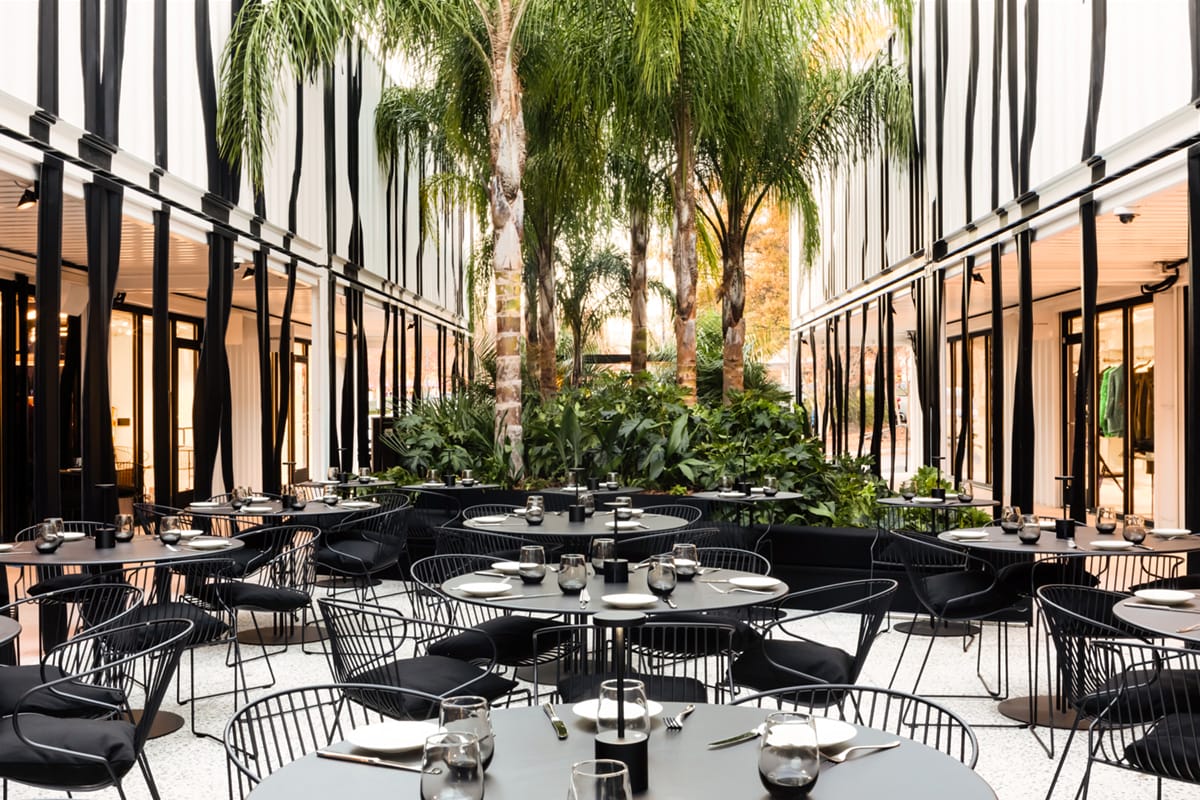
Enter BMarko Structures, a modular manufacturer in Atlanta, Georgia, that specializes in building with shipping containers. “It was difficult because they had a very strong brand, real estate with palm trees,” said Antony Kountouris, BMarko Structure’s CEO. “We’re talking about a tree that needs the conditions in Florida to survive. So, there were movable real palm trees and walkways. We cut out the container walls to resemble palm trees. It was a major effort in design and execution to make the whole brand and feel mimic that of their enormously luxurious mall in Miami Beach.”
Kountouris credits the project’s designer, LOT-EK, world famous for their container designs, for the majority of the heavy lifting on the project. But there were plenty of challenges to go around. For example, the corrugated walls of the containers on the first floor had to be cut and removed to leave a portion that resembles a palm tree stump. On the second floor, which would be used for storage, all the corrugation stayed (a reverse image of the top of each palm tree was painted on the exterior). The team struggled with how they would cut the corrugated metal. Their usual tool, a grinder, wouldn’t turn to make the necessary angles. So, they had to devise their own tools and process for transferring the design to each container.
Other challenges included storing hundreds of gallons of water in the second story containers to provide much needed stability for the first floor and eliminate the necessary anchoring, and accommodating movable water features and a mobile tent for the interior corridor.
“You look at the Tiffany’s logo and you recognize that, which is a good thing. You don’t realize all the engineering and all the late nights that went into figuring out how to do it, which is great.”
The mobile shipping container shopping mall consists of 28 containers, with the upper floor used for merchandise storage and the water tank counterweights. Production took approximately 20 weeks, and the mall takes three days to set up and two days to take down. So far, it’s been to Raleigh, North Carolina, and Sarasota and Destin, Florida.
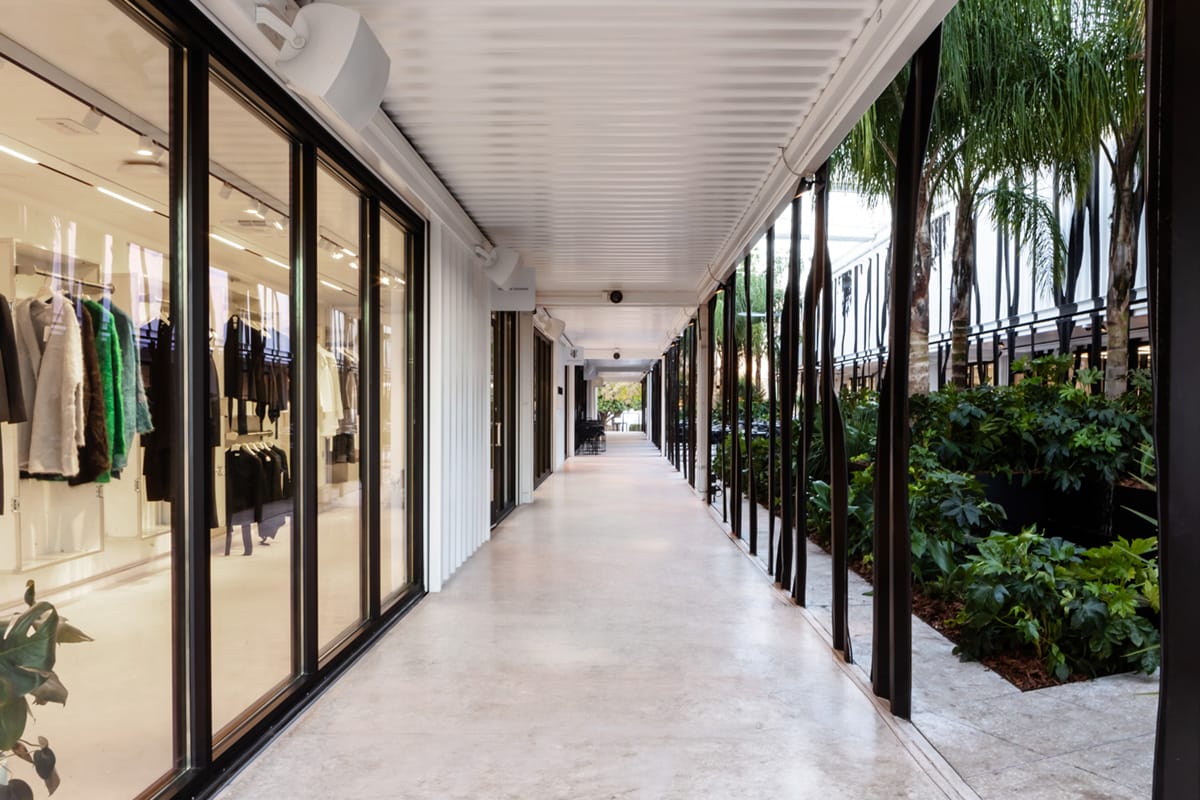
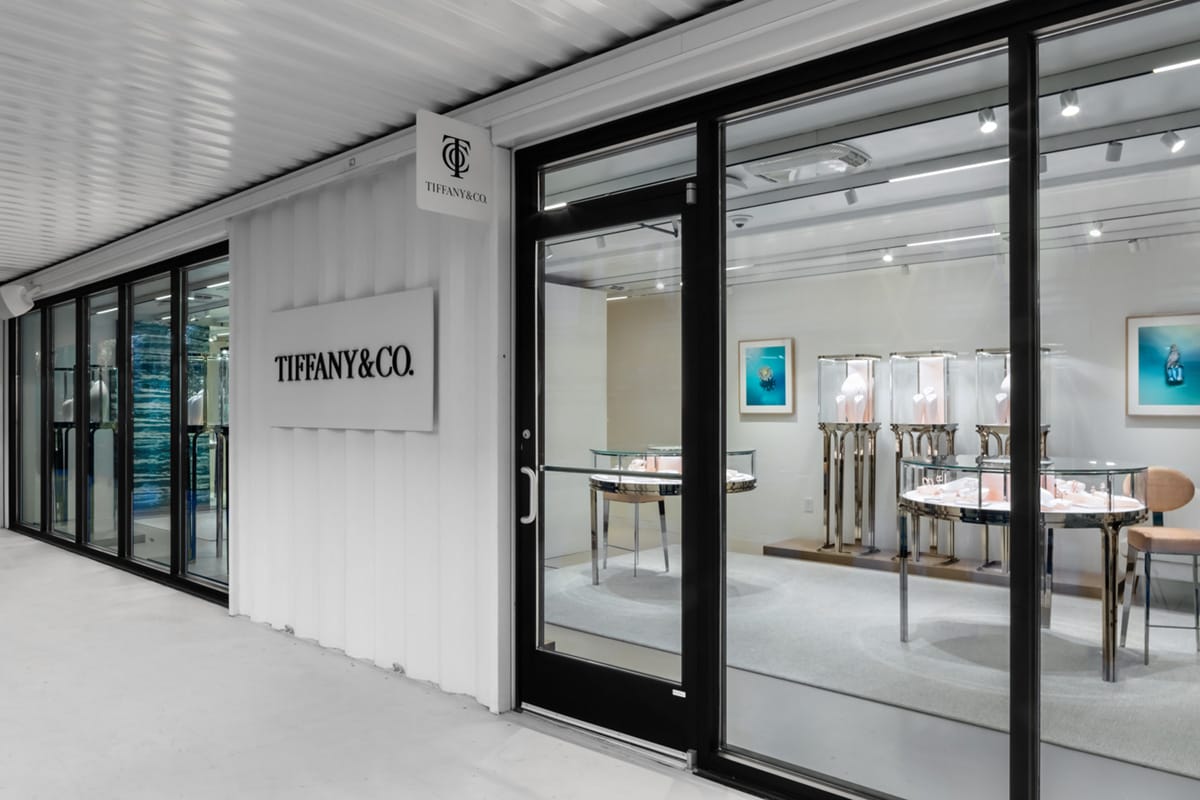
Next Stop: The Moon
BMarko Structures was started in 2014 by Kountouris and Boris Jerkunica. Jerkunica built his own soccer stadium in Atlanta that used modular construction and was completed in only four months. After founding and selling some very successful software companies, Jerkunica was ready to start something new, and was looking to start a modular manufacturing company. Kountouris had recently completed his mechanical engineering degree, and the two met through a mutual connection and hit it off.
Kountouris was raised in Athens, Greece, for the first sixteen years of his life, when he came to Stanford University for a summer program where he fell in love with the US. His mother had studied abroad, and he was also encouraged to do so by a local math tutor. After he graduated from high school, he selected the University of California at San Diego, where he studied for four years. He struggled to get a job as a mechanical engineer because most of them required security clearance, which he couldn’t get because he wasn’t a US citizen. Luckily his resume ended up in front of Jerkunica, who was looking for someone who could think outside the box.
They started off modifying shipping containers because of the low barrier to entry, but now offer custom steel modules as well. Over the company’s ten years, BMarko Structures has tackled a variety of projects, including their shipping container shopping mall and a recent lunar lander transporter.
“Our client won a contract with NASA to land their rover on the moon. This is a very highly engineered vehicle that’s going to land on the moon. So, it needs to go all over the United States for testing in different humidity levels, temperatures, pressures, etc. It’s going to be transported to these different locations in our custom steel enclosure. It’s never a boring day at BMarko Structures, I’ll tell you that much,” Kountouris said.
The company has around 35 employees, with 20 of them focused on production. They provide a variety of structures, from data centers to restrooms to press boxes. “We’ve built a company that’s very adaptable to new requests and what our clients want. We engineer to fit.”
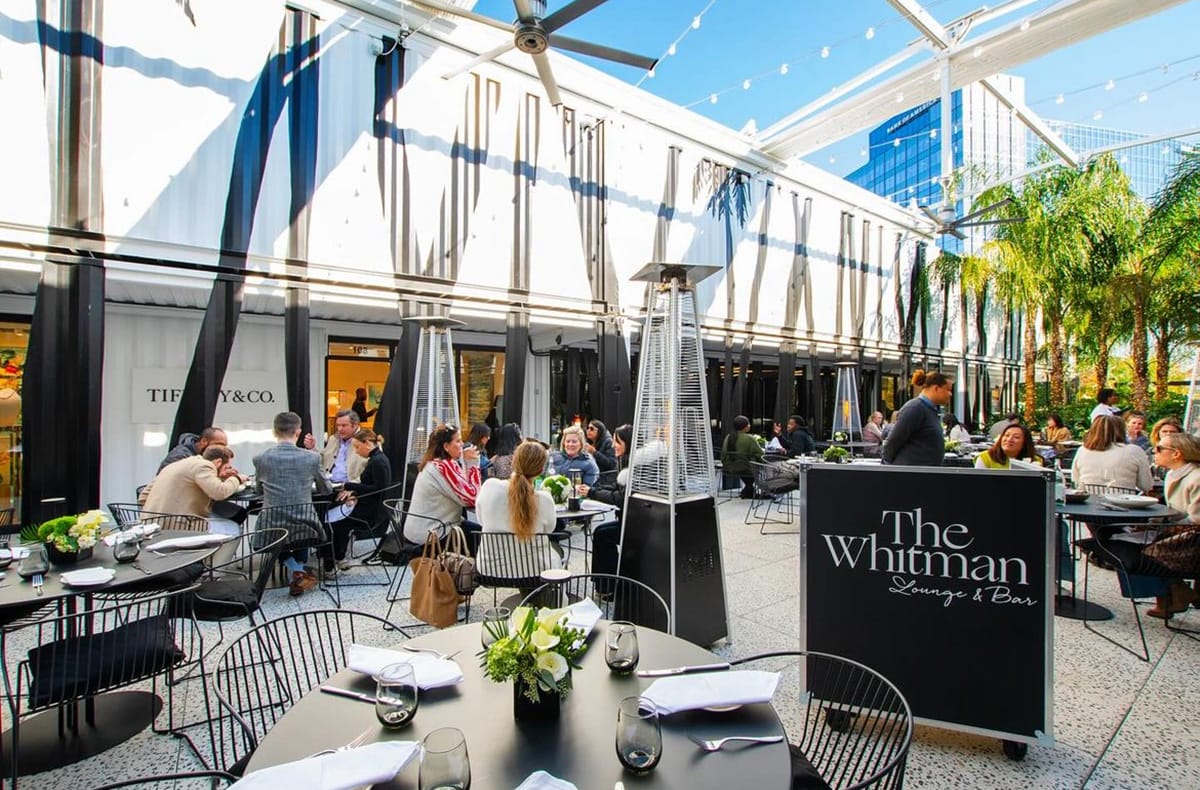
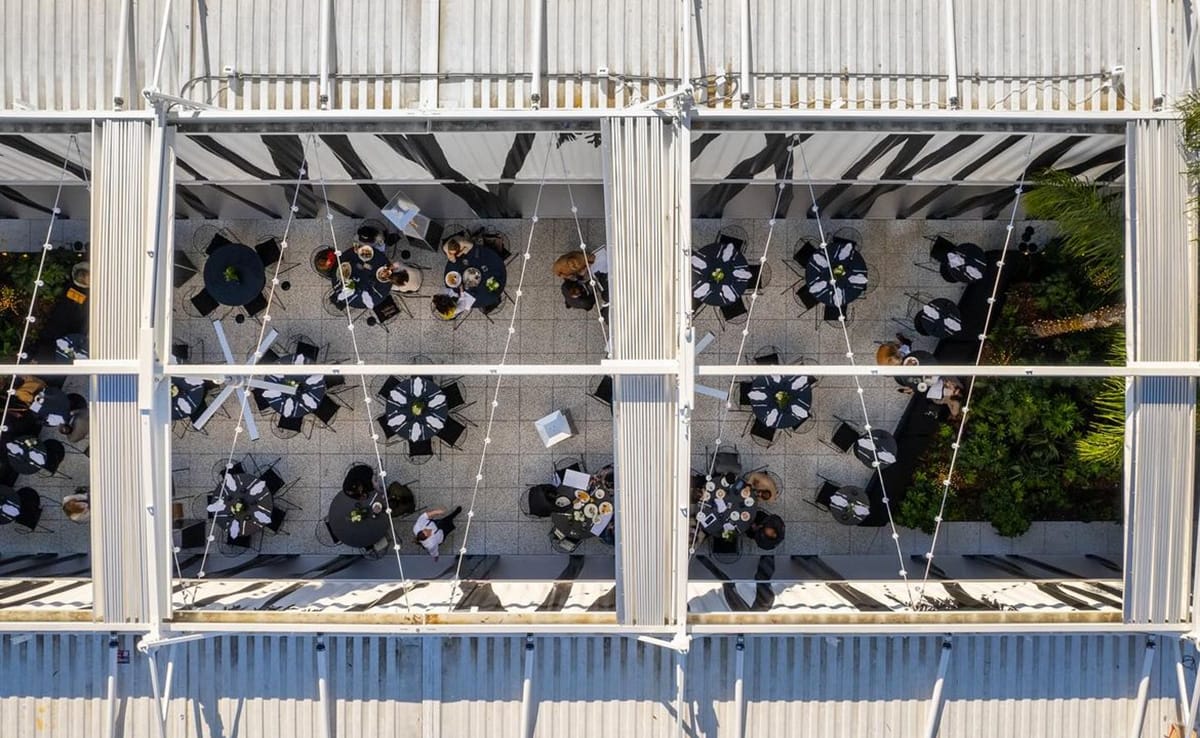
To maintain that flexibility, they rely on great employees and very good systems.
“A few years ago, we made the decision to build our own software. It’s called Aria after the Game of Thrones character. We have already moved around 30% of the company’s operations on it and won’t stop until we are at 100%. Building our own software means that we can do things our own way—every time—and not have to change our ways to cater to off the shelf systems or software.”
Shipping Container Buildings: The New ‘Sexy’ Structures
Kountouris sees the market for shipping container shopping malls and other container-based buildings growing in the future. “More people are aware of shipping containers and how they can be manipulated, and the new generation wants something different. They’re tired of the same old, same old. So, there’s a sexy factor about this complete building rolling up. It’s the difference between building a BMW in your driveway, as opposed to having the complete BMW show up, and saying ‘here’s the keys, you drive.’”
“The name of the game with AI and everything, the new generation, is they want things fast. And we see that even with the spending habits on consumer economics. Everything’s faster now and people are willing to pay a premium for that. So, all the factors are leading to growth.”
“We need to remember that what’s selling today is not necessarily going o sell tomorrow. So, I think we’re going to continue to go to new industries to expand our capabilities as we grow. As we get larger, we won’t get stiffer, but more flexible. And that’s going to not only preserve our spot in the modular construction ecosystem but grow it and continue to bring more and more value to this industry.”
Modular construction doesn’t necessarily offer price savings over stick built, but it does offer flexibility, quality, and speed. “If you can’t pencil out your project as stick built, you likely can’t pencil it out as modular. If we educated folks right away on the real benefits of modular construction (flexibility, quality and speed), I think it would progress the industry at a faster pace.”
BMarko Structures’ portfolio of upcoming projects shows their diversity: data centers, museums, schools, kitchens, and airport electrical control rooms. “A lot of people reach out to us with their crazy ideas.” Including one client that wanted a removable, motorized roof on a container. “We’re very open to hearing what our customers are trying to achieve and helping them get there.”
About the Author: Dawn Killough is a freelance construction writer with over 25 years of experience working with construction companies, subcontractors and general contractors. Her published work can be found at dkilloughwriter.com.
More from Modular Advantage
Behind the Design of Bethany Senior Terraces, NYC’s First Modular Passive House Senior Housing Project
As more developers seek to meet new regulations for energy efficiency, the team at Murray Engineering has set a new record. With the Bethany Senior Terraces project, Murray Engineering has helped to develop NYC’s first modular structure that fully encompasses passive house principles — introducing a new era of energy efficiency in the energy-conscious city that never sleeps.
How LAMOD is Using Modular to Address Inefficiency, Sustainability, and the Future of Construction
As developers, designers, and contractors seek to understand the evolving needs of the modular industry, no one is as well-versed in the benefits of going modular as Mārcis Kreičmanis. As the co-founder and CBDO of LAMOD in Riga, Latvia, Mārcis has made it his ultimate goal to address the inefficiencies of traditional construction.
From Furniture Builder to ‘Activist Architect’: Stuart Emmons’ Unique Journey
Stuart Emmons was fascinated by buildings at a young age. He remembers building sand cities with his brother during trips to the Jersey shore. His father gave him his first drawing table at the age of ten. Today, he is an experienced architect who received his FAIA in June 2025. The road he took is unique, to say the least.
Forge Craft Architecture + Design: Codes, Contracts, and Intellectual Property
Founding Principal and Director of Modular Practice for Forge Craft Architecture + Design, Rommel Sulit, discusses the implications of codes, contracts, and intellectual property on
modular construction.
Eisa Lee, the “Bilingual” Architect
Now as the founder of XL
Architecture and Modular Design in Ontario, Canada, she applies not just her education as a traditional architect but an entire holistic view on modular design. It’s this expansive view that guides her work on being a true partner that bridges the gap between architects and modular factories as they collaborate on the design process.
Tamarack Grove Engineering: Designing for the Modular Sector
The role of a structural engineer is crucial to the success of a modular project, from initial analysis to construction administration. Tamarack Grove offers structural engineering services — project analysis, plan creation, design creation, and construction administration — for commercial, manufacturing, facilities, public services, and modular. Modular is only one market sector the company serves but it is an increasingly popular one.
Engineer Masters the Art of Listening to His Customers
Since founding Modular Structural Consultants, LLC. in 2014, Yurianto has established a steady following of modular and container-based construction clients, primarily manufacturers. His services often include providing engineering calculations, reviewing drawings, and engineering certification
Inside College Road: Engineering the Modules of One of the World’s Tallest Modular Buildings
College Road is a groundbreaking modular residential development in East Croydon, South London by offsite developer and contractor, Tide, its modular company Vision Volumetric (VV), and engineered by MJH Structural Engineers.
Design for Flow: The Overlooked Power of DfMA in Modular Construction
Unlocking higher throughput, lower costs, and fewer redesigns by aligning Lean production flow with design for manufacturing and assembly.
Choosing the Right Ramp
Modular construction offers a compelling alternative to traditional methods for designing and building ADA and IBC-compliant entrances. By addressing the challenges of traditional construction, such as time-consuming processes, unavailable specialized labor, and variable field conditions, modular solutions provide a more efficient, cost-effective, and reliable approach.

